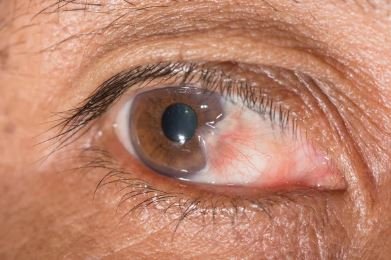UV damage and the eyes
We’re all at risk for UV damage; the more exposure to UV we get, the higher the effect/risk. The structures within our eyes can also be impacted by UV, which can lead to issues such as damage to the front of the eye, progression/earlier development of cataracts and even conditions like macula degeneration.
UV damage and the eyes (not an exhaustive list):
Sun burn! Did you know your eyes can get sunburnt? Photokeratitis can be extremely painful and can cause short term reduction in vision.
Skin cancers: Just like any part of our body, the skin around the eyes and tissue inside the eye can all develop cancer. Depending on severity this can lead to blindness.
Pterygiums ‘Surfers eye’ and Pinguecula: when fleshy growth caused by UV exposure grows from the conjunctiva over the white portion of your eye. These can grow to cover part of the cornea which can ultimately impact the vision.
Cataracts: While we all get cataracts as we age, UV exposure speeds up this process. If cataracts impact the vision, surgery is needed to remove them.
Macula degeneration: A leading cause of blindness in the older population in Australia (approx. 1 in 7 people over 50 show early signs of macula degeneration!). Macula degeneration develops when the retina deteriorates, UV increases the speed and risk for this.
What can you do to protect your eyes from UV?
The highest risk for UV exposure/damage tends to be between 10am to 4pm each day. Damaging UV is there even on an overcast day! To best protect your eyes from UV exposure, sunglasses and a hat are highly recommended. Well-fitting sunglasses are essential as UV comes not only from the sun above, but can be reflected off the ground, water, snow and sand. Polarised lenses can also help block reflected UV radiation & allow for better visual clarity.
So what are you options for UV protection?
Read on below!
Transitions
Transitions lenses are a fantastic option for those who want to switch between indoors and outdoors, without fumbling for that second pair of specs. Transition lenses come in traditional grey, brown and green, as well as coloured options such as amber, emerald, sapphire and amethyst – depending on the type of lens.
Transitions signature Gen 8 is the fastest, darkest and clearest transitions lens yet!
Although Transitions XTRActive lenses always have a slight tint to them, they come with the added benefits of polarisation! So for those who are extra glare sensitive, these lenses can have up to 90% polarisation efficiency compared to polarised sunglasses.
Polarised lenses
Polarised lenses have a special chemical applied to them to filter horizontal light. Think of it like a blind hanging in front of a window. Only light that passes through the blind’s openings can be seen. As a result of this filtering, the image you see with polarised lenses is a bit darker than usual. But objects look crisper and clearer with polarised lenses, and details are easier to see. Polarised sunglasses may be especially helpful when..
Driving: The lenses block all of the glare bouncing off a shiny car, icy or wet roads and on bright overcast days.
Fishing/water activities: People who fish find that polarised sunglasses drastically cut the glare and help them see into the water.
Golfing: Many golfers find that polarised lenses reduce glare on fairways, and you can remove polarised sunglasses when putting if that’s your preference.
Most snowy environments: Snow causes glare, so a pair of polarised sunglasses are usually a good choice. Grey polarised lenses are the darkest and are generally best in these environments
Tinted lenses
In store we can offer a range of lens tinting to suit your needs. Tinting can be done on optical frames for those who enjoy a slightly coloured view (i.e a weak yellow tint to the lens), which can aid in all-round glare reduction. Tinting can also be done in some cases to match certain gradients or colours of sunglass lenses. Both options come with UV filters and coatings applied to keep your eyes safe from the harsh rays. In order to find a colour and style you love, you’ll have to speak to a professional instore to find out how we can customise your tint to suit your needs.
Mirrored lenses
Mirror coatings such as CR Surfacing’s “Satin Mirror” consists of six captivating colours making sure there is a lens to suit everyone’s individual taste. In today’s high fashion sunglass markets, mirror coatings are more popular than ever. You can choose from 6 mirror colours on 3 polarised base colours, for a look to suit your taste. Satin Mirror provides enhanced colour definition, brighter outlook and increased protection against the sun. Look good in prescriptions and no longer compromise with style.
And don’t let that stop you if you’re a lover of transitions - there are mirrored options that returned to clear when indoors!
UV component written by Tori Halsey MSc. (Optometrist)
Lens options written by Deepika Satchithananthan







